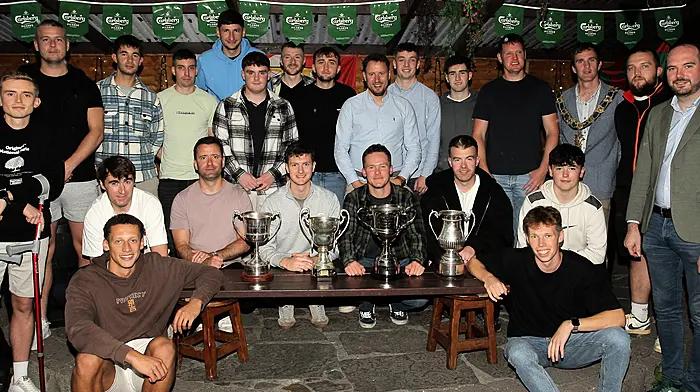A JURY at an inquest has recommended that farmers should have at least four possible escape routes when dealing with cattle in enclosed spaces.
They made the recommendation at Bandon District Court last week when hearing evidence about the death of Joseph Shorten, who was killed by a bull at a farm at Ardkitt in Enniskeane last year.
Mr Shorten from Castletownkinneigh, Enniskeane, was found lying dead in a shed on his farm on April 14th last year.
In a statement read out in court by Insp Emmet Daly, veterinary surgeon Jim Kelleher, who works with Riverview Veterinary Group in Bandon, said he called to the farm that day at 3.35pm to follow up on tests that he carried out on cattle three days earlier.
He said he saw the deceased lying on his side and his trousers were pulled up around his wellingtons. It appeared that he managed to drag himself along the ground from the cattle pen and into the shed.
‘He wasn’t breathing. There was blood on his nose. I rang 999 and they told me to begin CPR. His chest felt soft and I did my best, but more blood came,’ he said in his statement.
Dr Jason van der Velde then arrived and pronounced him dead, the coroner was told. Dr van der Velde had said his chest was very badly damaged.
Mr Kelleher said that he noticed a Hereford bull in a pen on his own who appeared to be very agitated.
His leg was lame and he was separated from the rest of the cattle and this may have caused him to get upset.
He gave a hair sample from the bull’s head to investigating gardaí which had blood on it.
He added that in 99% of situations involving cattle in enclosed spaces, there are no escape routes, meaning farmers would have to climb over a gate. He said that safe spaces involving vertical bars could help in situations like that.
‘It should be mandatory that there should be two escape routes so that a farmer would know how to get out of a pen.’
Mr Kelleher told coroner Frank O’Connell that an upset bull would go and knock someone down and then put the weight of either its head or front legs on them. The bull’s head is probably 100kg in weight, while this bull was 600kg.
‘Cattle can be unpredictable and even cows with calves can attack within seconds and you have to have an escape route.’
Sgt Ruairí Gunn of Bandon Garda Station told the inquest that on the basis of early enquiries they were satisfied that Mr Shorten didn’t die due to an assault from a third party. He said that fibres on the deceased’s jumper matched the colour of the hair of the bull.
Another witness recalled meeting the deceased at a local supermarket not long before the accident on the farm.
Assistant state pathologist Dr Margot Bolster said she carried out an autopsy on the deceased on April 15th. It showed that Mr Shorten had experienced severe blunt force trauma to his chest and abdomen with multiple fractures to his ribs as well as damage to his sternum as well as the collapse of both lungs and a laceration of the spleen.
‘The cause of death is consistent with being attacked by a bull and he would have lapsed into unconsciousness very fast. Even if somebody had been there, there would have been no hope,’ said Dr Bolster.
Mr O’Connell asked the six-person jury to consider the recommendations of Mr Kelleher regarding escape routes in cattle pens. They returned a verdict of occupational accident on a farm involving an attack by a bull which caused haemorrhage and shock, due to severe blunt force trauma to Mr Shorten’s chest.
The jury also recommended that there should be at least four escape routes considered for those working closely with cattle in enclosed spaces.
Mr O’Connell said he would inform the Health & Safety Authority of the verdict and the recommendations of the jury.










